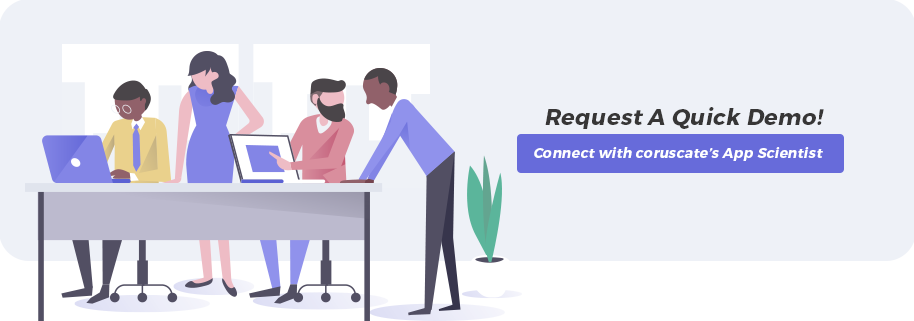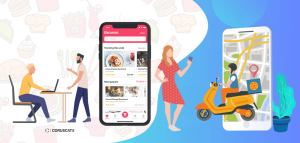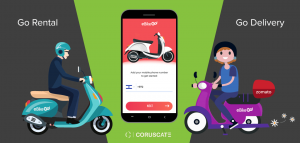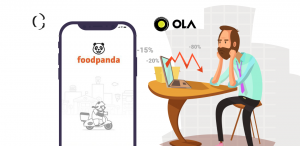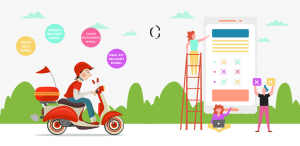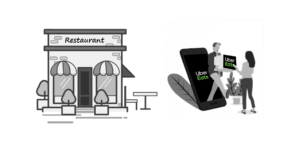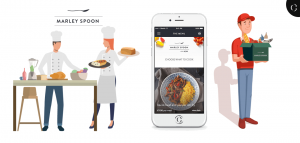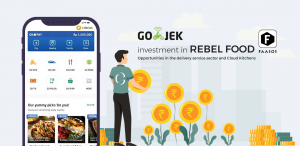The potential Uber-Grubhub merger is the sign of large-scale food delivery app consolidation coming ahead in the industry: Top 10 ways to save your business in this rapidly consolidating on-demand food delivery app market
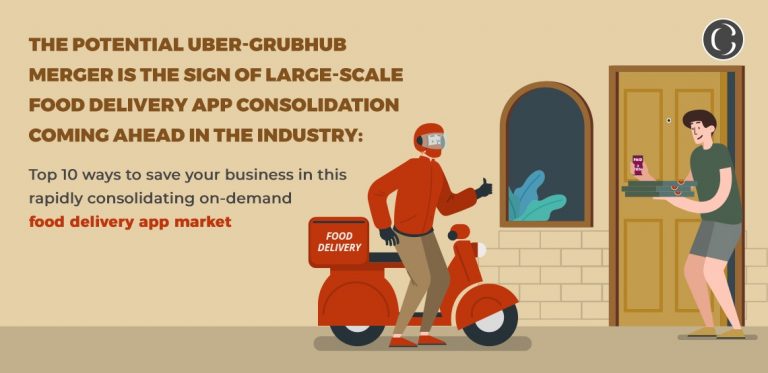
In the current #stayathome era, on-demand food delivery business is booming all over the world. The ride-sharing company and UberEats parent company Uber has reportedly made an offer for a tie-up, to a smaller rival Grubhub. This potential combo of Uber-Grubhub is said to make Uber, the largest food delivery platform in the USA, surpassing the DoorDash.
According to the survey released by Consumer Intelligence Research Partners, amongst the consumers who have used restaurant delivery in the past 90 days, Uber Eats was used most recently by 34% of consumers, followed by DoorDash (33%), Grubhub (21%), and lastly, Postmates (12%).
Edison Trends has also released a study of over 190,000 transactions made in the US food delivery market in April, shows that 47% of them belong to DoorDash, followed by Uber Eats at 26%, and then, Grubhub with 23%.

As soon as Bloomberg reported about the potential merger, the Uber’s shares hiked by 2.4% and the Grubhub shares surged 29%. Uber has already tie-ups with the major food chains, from McDonald’s to Starbucks in the market.
Apart from this, the US-based technology research company Technavio has released its report on the on-demand food delivery services market, and it is poised to grow by USD 104.45 billion during 2019-2023, progressing at a CAGR of over 15% during the same forecast period.
In this rapidly consolidating food delivery app market, you need to advance the app according to the trending technology, to stand the other side of the competition. Let’s have a look at the top 10 trends in the on-demand food delivery industry.
The food delivery medium:
With the help of technology, the future of the food delivery industry will deliver the food via robot, drone, parachute, etc. The best part of these delivery methods is that, they come with their own tracking system which allows users to track their orders easily.
Melbourne-based Jafflechutes introduced the first-ever float-down eatery. Food delivery through parachute will become the norm in the future. The system has successfully tested with Jafflechutes delivering toasted sandwiches to customers by mini parachute. When customers order their sandwiches, they are asked to wait at the drop location, and at the given time, customers will see the parachute-drop and can catch the package. The company is now working on developing the food delivery tracking system so that the customers can know the exact time of the food delivery.
Eat24 created a custom food delivery robot in association with Marble and Yelp, which is said to be the next big thing. The food delivery robot is about the size of a coffee table and is equipped with a 3D map of the city, sensors, and advanced cameras, which allows the food delivery robot to determine the routes and select the optimized route based on traffic to avail customers the food delivery on-time. The robot automatically selects the most accurate route based on its wheel’s capabilities to avoid entities like bumps, cars, humans, pets, cycles, or other delivery robots.
Zomato is an India-based restaurant aggregator and food delivery startup, which has successfully tested its custom hybrid drone food delivery technology. Drone food delivery is the best way to beat the heavy traffic and deliver food on time. Zomato reduced its current average delivery time of 30 minutes to 15 minutes through this smart solution.
Multi-delivery channels:
A user-friendly food delivery service is the need of an hour to retain customers. The goal of any food delivery service should be to simplify the online food ordering process and optimize the delivery process. The future of the food delivery industry will see the infusion of new delivery channels for the same reasons.
A glimpse of it is already visible. Recently, Pizza Hut has developed an in-car food ordering system that allows users to buy pizzas while on the road, through which one can place an order by voice and eliminates the need to check the screen, by collaborating with Visa and Accenture.
Domino’s Pizza has partnered with social media giant Twitter and created a platform that allows users to order pizza by simply tweeting the ‘pizza’ emoticon through their custom pizza Twitter profile on Domino’s online delivery service by linking their Twitter account and saving their default order as ‘Easy order.’
People having smart TVs now can order food while bingeing movies and Netflix. Papa John’s Pizza has merged with Apple TV that allows users to browse its entire menu, view order history, customize the order, and place the final order.
➣ Explore new domains:
To increase the exposure and expand your market you can explore the different prospects in the new domain that will ensure a huge audience hit.
➣ Food waste management apps:
As per the researches, almost 35% of the food produced around the world gets wasted. The app-based startups can solve this problem by launching the food waste apps, that tackle this leftover food and provide it to the needy at a lower price.
Food for All is a similar app offering unsold meals from local restaurants or cafes with a 50% discount, with which one can grab a delicious dinner for $3. Here, the user needs to place an order through an app and takeaway from the restaurant at a given time.
Food Rescue is the US-based volunteer-driven platform determined to food rescue movements. It supplies over 50 million food-insecure Americans with fresh food from restaurants and grocery stores.
➣ Pet food delivery apps:
Almost 68% of American families own a pet and over 40 percent of Americans are dependent on online food purchases. Pet food delivery apps are prevalent among the people who are looking for a complete convenient, customizable option, and healthy treats for friends. This increasing demand for pet food has given birth to the number of pet food delivery apps in recent times.
Monster Pet Supplies has launched its pet food delivery app in the UK to offer a hassle-free shopping experience. The app also offers free delivery and order scheduling in case of repeat delivery.
➣ Kitchen display system:
Kitchen Delivery System is an information display screen present in the kitchen backend area. This device directly gets information regarding orders from the restaurant admin panel, which reduces the communication gap and speed up the delivery process.
The latest KDS can get inputs from both the panels and inventory details will also be displayed on the screen so as to decide on the menu. This will increase the overall efficiency irrespective of the type of business model.
➣ Ghost kitchens/Virtual kitchens:
The virtual kitchen is a unique concept introduced by Uber. Uber Eats lists new eateries, snacks, and meals that are only available on their app. This way, UberEats is helping restaurants to dodge the expenses of starting a new physical place by providing convenience to use their kitchen space to serve extra meals.
In the near future not only the ghost kitchens will go mainstream, but mobile kitchens will emerge as well. Take Zume, for example, which launched Zume’s mobile kitchen fleet. Pizza Hut also unveiled a mobile pizza factory prototype last year.
As consumers are mostly relying on food delivery apps, new methods for getting food closer to the end customer is going to evolve. Mobile kitchens will be able to move to where customer demand is highest and meet changing consumer preferences.
➣ Modern customers:
Your on-demand food delivery app must be based on the target audience. The millennials are said to be the highest consumers of prepared food services. According to reports, more than 60% of millennials visit quick-service restaurants for takeouts or order online for food delivery.
Keeping this in mind your app should be built in such a way that accommodates their requirements, which include gamification, one-step checkout, instant delivery, effortless ordering, and an advanced delivery tracking system.
➣ Hybrid cloud approach:
Cloud computing is a boon to the on-demand industry. Since a lot of user data is involved in this service, there is no better way to store it than the cloud. Now, hybrid cloud technology has come to the fore, which is nothing but an enhanced version of the cloud.
In a hybrid cloud approach, more emphasis is given on data security and safety. The fluctuations in data transfer and scale the business can also be handle effortlessly using a hybrid cloud.
➣ 5G service:
Latency is the time taken to exchange data packets between any two devices, and the lesser the latency, the more is the network speed. 5G is said to have the lowest latency so far and it is expected to be made mainstream by the end of 2020.
This can substantially lower the speed at which delivery agents are assigned and orders approved by the restaurants. Real-time delivery updates will become more accurate.
➣ Crypto food orders
The rise of blockchain technology will bring a new service niche in the future: crypto food orders. By using cryptocurrencies for orders, companies can eliminate fraudulent activities and enhance the overall UX.
The food delivery companies that are supporting crypto payments today, are Papa John’s Pizza, Feastly, Lobster Gram, Levy Restaurants, BlockFood, Ufoodo, and Takeaway.com. They use smart contracts to provide transparent transactions.
➣ Big data
Big data will revolutionalize food delivery services and make them more efficient. Food providers can collect and analyze a huge scope of data including traffic on the road, the impact of temperature on the food, market trends, customer behavior, feedback, and reviews. This way food delivery companies can accurately estimate the delivery time and immediately react to customer complaints, if arises.
How we can help you to develop on-demand food delivery app
As the food delivery businesses are mushrooming all over, Coruscate will help you build the outstanding food delivery app, with our immense experience of delivering app in the same industry all over the world.
Partner with Coruscate and you will be able to integrate all the best features or create a few new ones to beat this cut-throat competition. If the idea of a food delivery app business is simmering in your head, all you need to do is contact us. Our team of engineers will get back to you with a customized solution, live demo, and personalized quotations for your idea.
